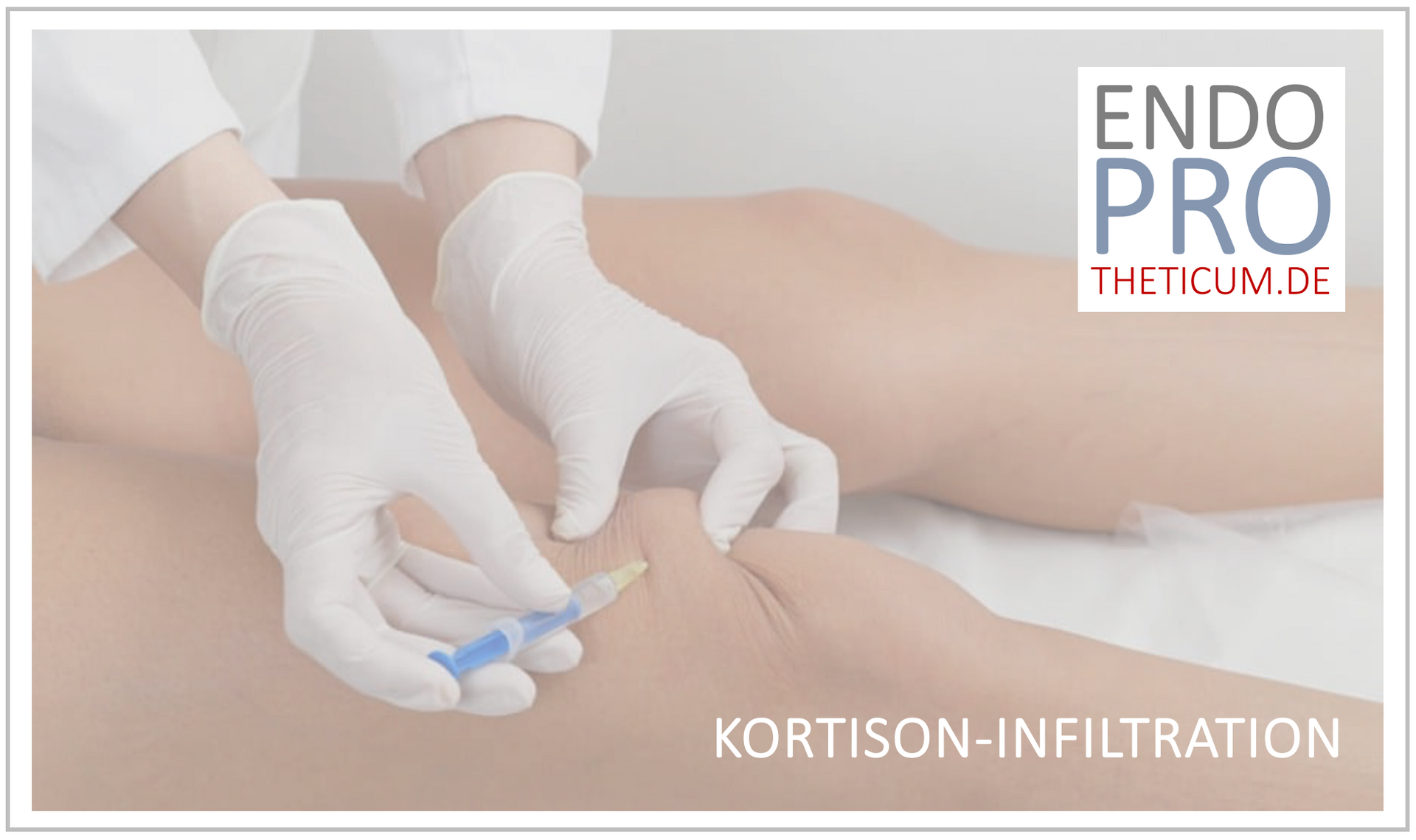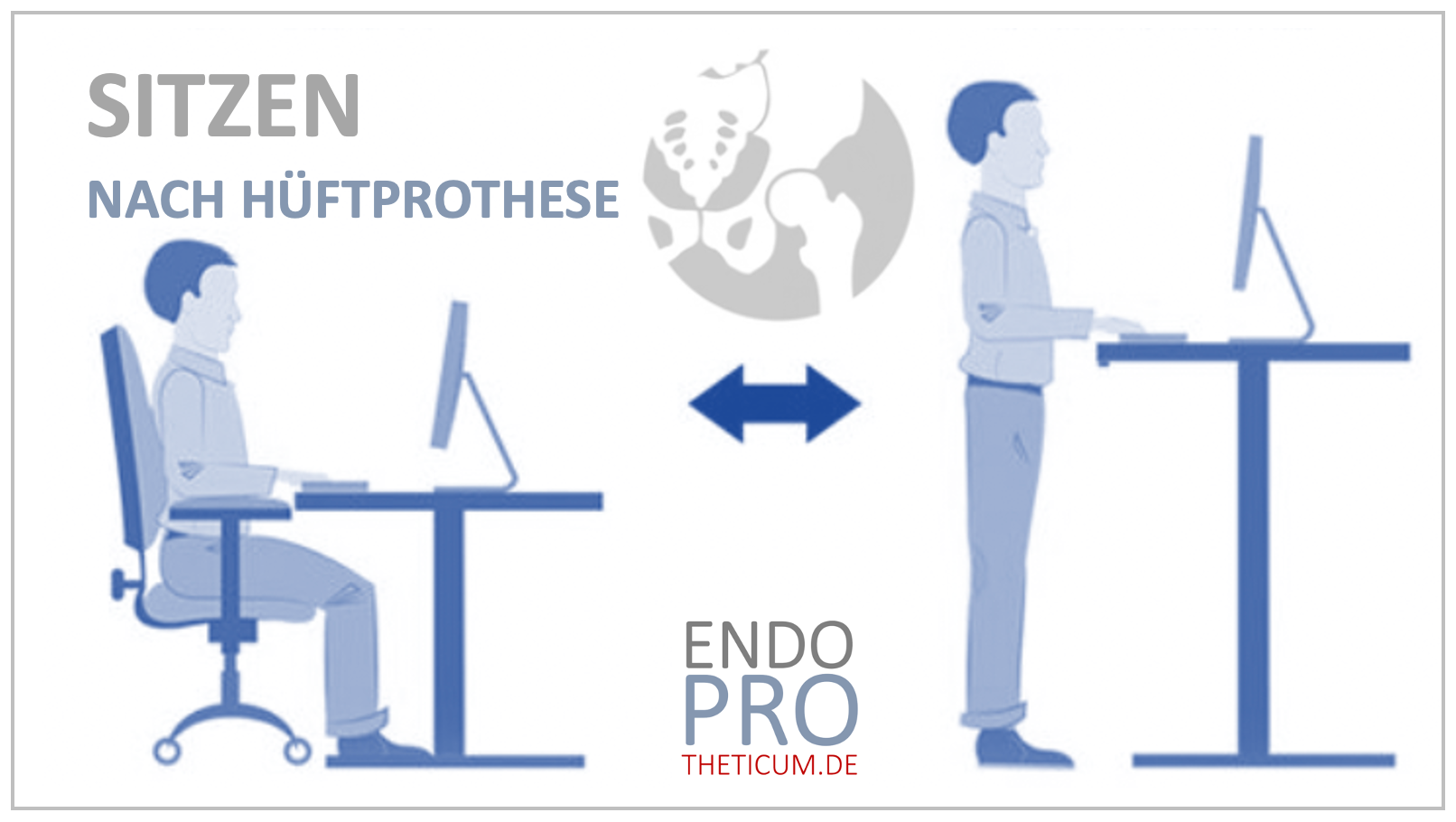Meniscus tear: traumatic or degenerative?
Degenerative meniscal tear through wear:
Why arthroscopy (knee reflection) often does not help

Why the difference in the meniscal tear is decisive
The meniscus serves as a shock absorber and stability provider in the knee, which is why its integrity is essential for the functionality of the joint. A meniscal tear (meniscus lesion) in the knee is one of the most common injuries to the knee joint - but not every tear is the same. The crucial difference is whether the tear has arisen from a sudden trauma or whether it occurs with years of wear, often as part of an oncoming osteoarthritis, degenerative. This distinction is not only important for the diagnosis, but especially for choosing the right treatment.
An acute, traumatic meniscal tear in a young athlete must be treated very differently than a wear -related crack in an older person.
In this comprehensive contribution, the differences between traumatic and degenerative meniscus injuries are examined in detail. Mechanisms of origin, affected groups of people, symptoms and corresponding therapy options are discussed. In addition, it is discussed why in wear -related meniscus lesions, for example through arthrosis, arthroscopy is often not useful and which alternatives, such as the sled prosthesis, are available. Finally, the negative consequences of a meniscus partial resection, which is often carried out as part of arthroscopy, are discussed.
The meniscus - anatomy and function in the knee joint
The meniscus is a crescent -shaped cartilage disc in the knee joint. There are two menisks per knee:
- Inner meniscus : It is less flexible and therefore tears more often.
- Outside meniscus : more flexible and less often affected by cracks.
The main tasks of the meniscus:
- Shock absorbers: It distributes the body weight evenly on the articular cartilage.
- Stabilization: The meniscus ensures more stability, especially when moving.
- Joint protection: It protects the cartilage and prevents early abrasion.
A meniscal tear disturbs these functions considerably - and depending on the cause, this can have different consequences.
Traumatic meniscal tear - cause of the accident and typical symptoms
A traumatic meniscal tear is usually created by a sudden, abrupt movement of the knee - often in sports such as football, skiing or tennis. Classic movements that lead to a crack are:
- Rotations of the knee with fixed foot
- Sudden change of direction
- Extension or flexion with high strength
🔹 Typical symptoms of a traumatic meniscal tear:
- Acute, stinging pain in the knee
- Swelling within hours
- Blockada feeling (the knee "Klemmmt")
- Crunch or snap in the knee
- Limited mobility
Young, active people and athletes are mostly affected.
👉 Diagnosis: A clinical examination (e.g. McMurray test) is made to clarify a meniscal tear. For secure diagnosis, MRI (magnetic resonance imaging) is the gold standard.
Degenerative meniscal tear - wear and osteoarthritis as a trigger
A degenerative meniscus tear is caused by creeping wear. The fabric becomes brittle for years and often tears with everyday movements.
🔹 Who is affected?
- Older people (from 50)
- Patients with existing osteoarthritis
- Overweight people
- People with malpositions (e.g. O-legs)
🔹 Typical symptoms of a degenerative meniscal tear:
- Pain on the knee side
- Performing pain after phases of rest
- Period of stress when climbing stairs or crouching
- Often no acute trauma in the background
👉 Diagnosis: Here, too, the MRI is the means of choice to make the crack and accompanying cartilage damage visible.
Diagnostics of the meniscal tear
Precise diagnostics are crucial to distinguish between a traumatic and a degenerative meniscal tear. Several examination methods are used:
Anamnesis (patient discussion)
The doctor asks the patient in detail:
- Complaints : How long has the pain existed? Was there a specific accident or did the symptoms cleverly appear?
- Pain localization : internal or external pain, load-dependent or permanent?
- Accompanying symptoms : instability feeling, blockages, crackling noises?
- General medical history : previous knee injuries, existing arthrosis, professional or sporting stress?
👉 Important:
- Acute trauma and sudden pain indicate a traumatic meniscal tear .
- Creeping pain without a clear event tends to speak for degenerative changes .
Clinical examination
The doctor checks the knee joint:
- Swelling (joint effusion)
- Mobility (inhibition of stretching and bending)
- Pressure pain along the joint column
In addition, targeted meniscus tests used:
- McMurray test
The doctor turns the lower leg when the knees bent inwards and outside. A pain or audible "click" speaks for a meniscal tear.
- Peely grinding test
The patient lies on the stomach, the knee is bent at the right angle. The doctor pushes the shin down and turns it. Pain indicates a meniscus injury.
- Steinmann-I and II test
Through active and passive interior and outer turning of the lower leg, the doctor checks whether pain occurs on the joint column.
👉
Note:
With degenerative cracks, the tests are often less clear. Images are particularly important here.
Imaging diagnostics
X -ray image
Although X -ray images do not represent meniscal injuries themselves, they help accompanying changes , e.g. B.:
- Joint splitting (indication of osteoarthritis)
- Osteophytes (bone extensions with wear)
- Axis misalignment (X or O legs)
👉 Important: If you suspect a purely traumatic meniscus injury without arthrosis, the X -ray is usually inconspicuous.
Magnetic resonance imaging (MRI)
The MRI is considered the gold standard for diagnosing meniscal cracks. It shows in detail:
- Location and extent of the crack
- Cartilage
- Joint effusion
- Accompanying injuries (e.g. cruciate ligament tears)
👉 Differences in the MRI picture:
- Traumatic meniscal tear : mostly clear, localized crack image.
- Degenerative meniscal tear : fringed -like, diffuse brightening in the meniscal fabric.
Ultrasound (sonography)
Ultrasound is suitable for the quick assessment of a joint effusion or coarser meniscus changes . However, it is not as precise as an MRI.
Treatment of meniscal cracks: Which therapy fits which crack?
The therapy is based on the type of crack, age of the patient, accompanying violations and the level of activity.
🔹 traumatic meniscal tear:
- Conservative: for small, stable cracks - physiotherapy and pain therapy
- Arthroscopy with seam: in fresh cracks in the well -supplied area
- Partial resection: removal of destroyed tissue (only if seam is not possible)
🔹 degenerative meniscal tear:
- Conservative therapy: pain reliever, weight reduction, physiotherapy
- Arthroscopy? Usually not sensible because the cause (wear) remains
- Alternative: sled prosthesis with advanced osteoarthritis
Conservative therapy of the meniscal tear (without surgery)
Especially with small, stable traumatic meniscal cracks and degenerative meniscus lesions, conservative treatment is often the first choice.
Goals of conservative therapy:
- Pain relief
- Reduction of swelling
- Restoration of mobility
- Building the stabilizing muscles
👉 Conservative measures at a glance:
- Protection: temporary relief and adaptation of the activity (e.g. avoidance of rotary movements).
- Cooling: ice packs for swelling reduction (15-20 minutes each, several times a day).
- High storage: supports the reduction of swelling.
- Medicines: Pain relievers (e.g. ibuprofen or diclofenac) have a pain -relieving and anti -inflammatory effect.
- Physiotherapy: Targeted exercises strengthen the muscles, stabilize the joint and improve mobility.
- Injections: hyaluronic acid (when arthrosis begins) or cortisone (with acute inflammation) can alleviate symptoms.
👉 When conservative therapy makes sense:
- Degenerative meniscus tear without blockade or instability
- Small traumatic cracks without pinching
- Simultaneous arthrosis (especially for over 50 year olds)
Types of operations for meniscus cracks
Depending on the type and location of the meniscus tear, different methods are possible:
a) Meniskus suture (meniscal reconstruction)
In the case of fresh, traumatic cracks in the well -blooded outer zone of the meniscus, this can be sewn.
Advantages:
- Preservation of the meniscus (important for long -term joint stability)
- Less risk to later osteoarthritis
Disadvantages:
- Longer rehabilitation time (3-6 months of discharge required)
- Say division not always successful
👉 Suitable for:
- Young, active patients
- Fresh traumatic cracks in the bloodless zone
b) Partial meniscal resection (partial removal)
In the event of cracks in the non -blooded zone (white zone) or heavily destroyed tissue, the broken part is removed and the meniscus is smoothed.
Advantages:
- Fast resilience (rehab often only 2-6 weeks)
- Pain relief usually occurs quickly
Disadvantages:
- Reduced buffer function → higher arthrosis risk
- Instability possible, especially with greater resection
👉 Suitable for:
- Traumatic cracks that cannot be sewn
- Acute blockades
c) meniscal plant
With complete meniscus removal (e.g. after prior resection) and persistent complaints, a donor meniscus be transplanted.
👉 is rarely done , especially in young patients without osteoarthritis.
Alternative: sled prosthesis (partial joint replacement)
In the case of degenerative meniscal cracks with existing arthrosis, arthroscopy often does not bring long -term success - a sled prosthesis be useful here.
What is a sled prosthesis?
It only replaces the worn part of the joint (usually the inner knee compartment) and receives the healthy parts .
👉 Advantages:
- Less bone loss than with a full prosthesis
- Natural feeling of movement is retained
- Shorter rehabilitation than with a total endoprosthesis
👉 Suitable for:
- Patients with one -sided cartilage wear
- Well -preserved rest of the joint
Small prosthesis as a solution for degenerative meniscal cracks and arthrosis
A sled prosthesis only replaces the damaged part of the knee joint - mostly the inner area. Advantages:
- Preserving the healthy knee
- Faster rehabilitation
- More natural feeling of movement
- Longer durability than total prostheses with correct indication
Consequences and risks of a meniscus partial resection-why the knee becomes unstable
Many think: "When the broken part is away, the pain is gone too." Unfortunately, partial resection often leads to instability because the meniscus is missing as a stabilizer.
🔹 Consequences:
- Higher arthrosis risk
- Faster cartilage wear
- Persistent pain
Long -term forecast after the op of a meniscal tear
🔹 Meniscus suture:
- Good results in younger patients and fresh, traumatic cracks in the well -supplied area.
- Healing rate: 60-80 % (depending on the crack shape and localization).
- Long -term forecast: If you are successful, the knee remains stable and the risk of osteoarthritis is less than after partial resection.
🔹 Partial removal (resection):
- Fast pain reduction , but:
- The meniscus loses its buffer and stabilization function.
- Risk for cartilage damage and osteoarthritis increases because the load is no longer evenly distributed.
- Long -term forecast: mixed , depending on the size of the removed meniscal components. Osteoarthritis often earlier .
🔹 Small prosthesis:
- The best option is often the best option for advanced osteoarthritis and degenerative meniscus damage.
- Good shelf life: 15-20 years with the appropriate load control.
- Forecast: Very good at locally limited joint wear - better mobility and less pain compared to the full denture.
<a i=0>For patients with</a> <a i=1>clear osteoarthritis</a> <a i=2>or</a> <a i=3>advanced cartilage wear</a> , a <a i=5>sled prosthesis</a> <a i=4>is</a> <a i=6>the more functional and sustainable solution, since it replaces the part of the knee joint that is damaged - without sacrificing the entire joint.</a>
A meniscal tear is not a meniscal tear. While a traumatic tear can often be well cared for arthroscopically, there is a reluctance to the operation with degenerative cracks. Especially with advanced osteoarthritis, a sled prosthesis can be a better choice to restore the mobility and quality of life.
For patients with clear osteoarthritis or advanced cartilage wear sled prosthesis is the more functional and sustainable solution, since it replaces the part of the knee joint that is damaged - without sacrificing the entire joint.
👉 You have knee problems and don't know which treatment is the best?
Get advice from an experienced knee specialist!
MAKE AN APPOINTMENT?
You are welcome to make an appointment either by phone or online .



























